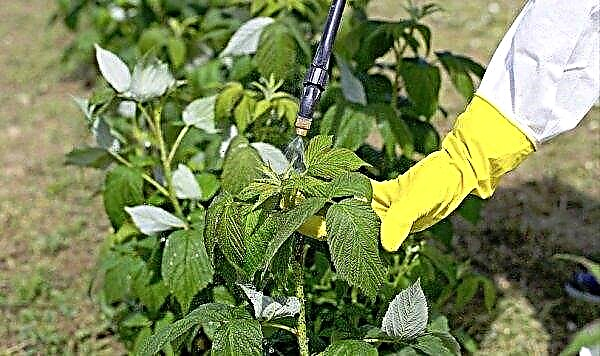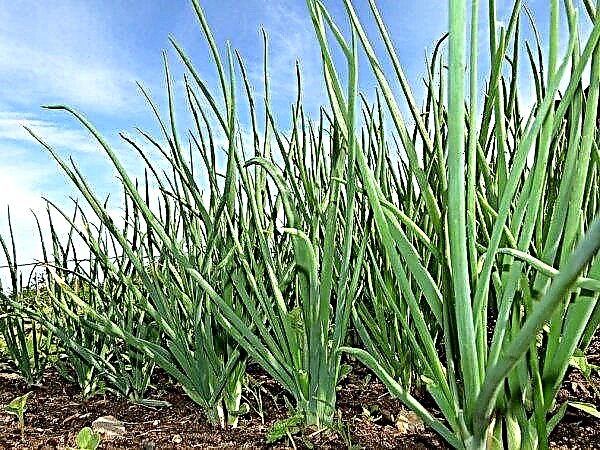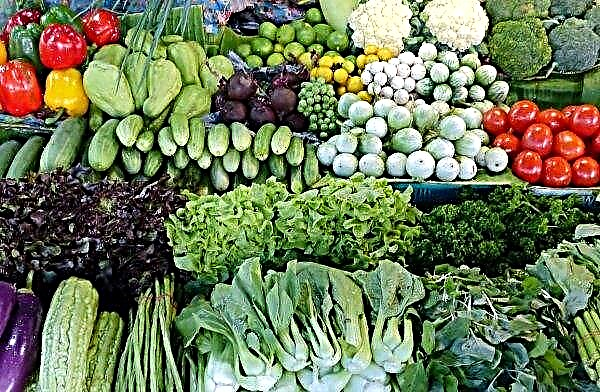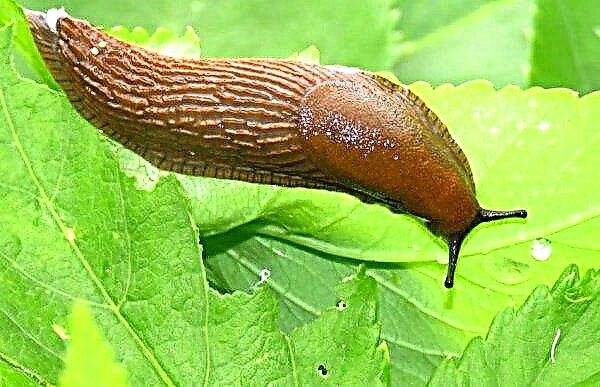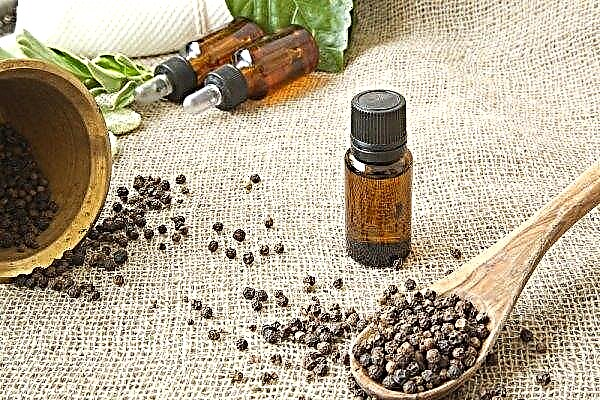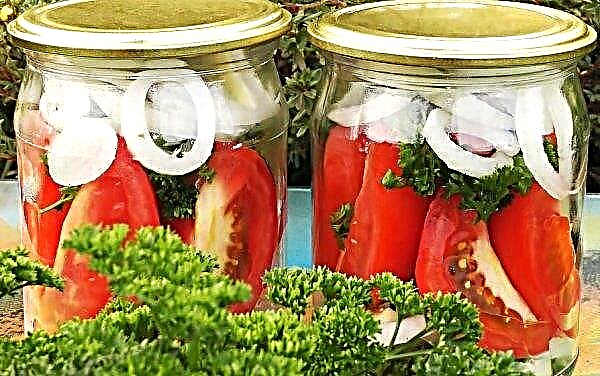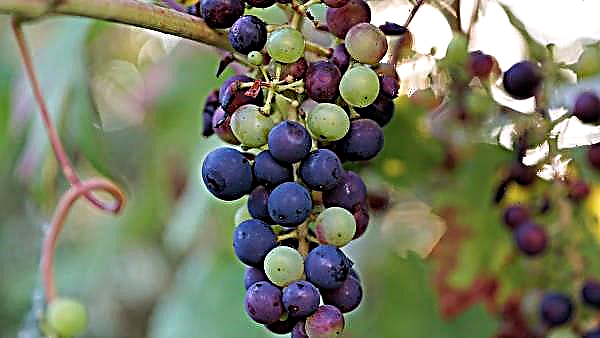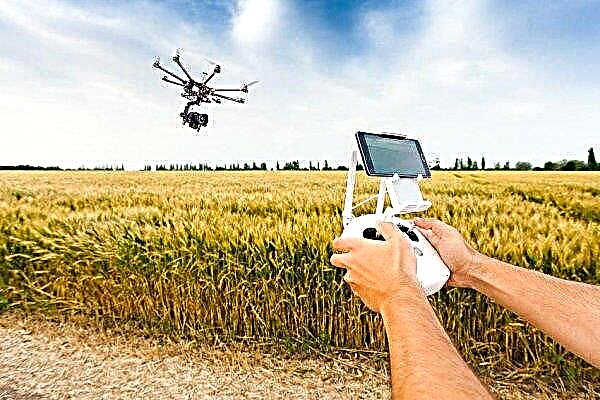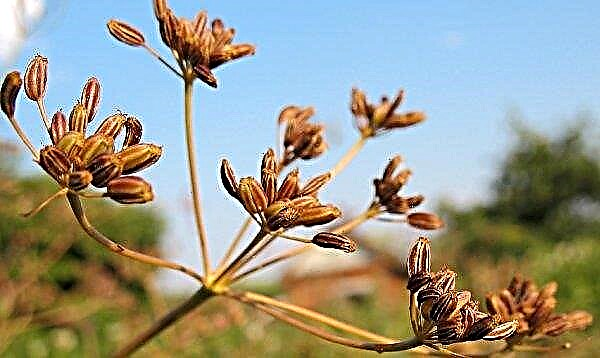Cabbage Kilaton is a modern hybrid for producing high-quality and tasty heads of cabbage both in the farm and in the homestead. Full characteristics and agricultural technology of the vegetable are presented below.
Selection history
Kilaton is a hybrid of the Dutch company Syngenta. It got its name, probably because of resistance to one of the most dangerous diseases of cruciferous crops - keel. It is entered in the State registry in 2004 for the Central region.
Description and characteristic
Hybrid white cabbage Kilaton is a late-ripening type. Its vegetation period is 130–135 days, and the crop is usually harvested in late autumn.
 The product is used both in raw and pickled form.
The product is used both in raw and pickled form.
Plant features
The characteristic features of the vegetable are as follows:
- head weight 3-4 kg;
- the head of the head is round, aligned;
- sectional color is white, density is good;
- leaves are medium, gray-green, waxy;
- inner stump - medium to short;
- the taste is good, for fresh sale.
The yield of the hybrid is approximately 305-600 kg / ha, and the maximum recorded value is 753 kg / ha. The percentage of output of marketable products is high, up to 90%.
Did you know? China grows almost 50% of the global cabbage crop, surpassing India, which occupies the second place, almost 4 times.
Heads of cabbage are suitable for long-term storage (up to 7 months), while preserving the attractive green color of the outside and easy peeling of the vegetable.
Cabbage is resistant to cruciferous keel, fusarium and internal pinpoint necrosis.
Plus qualities and possible disadvantages of the variety
- The hybrid has proven itself on the positive side by the following factors:
- high productivity;
- excellent marketability of heads of cabbage;
- disease resistance.
The relative disadvantages of this culture include a high need for mineral nutrition.
 The head of cabbage is stored for several months in a cool, dark room.
The head of cabbage is stored for several months in a cool, dark room.
Features of growing seedlings
The key to a high crop of vegetables on the site - planting healthy seedlings. In the case of hybrids, seed should be purchased for each season in a proven place, since self-collected seeds do not retain the hallmarks of the plant.
Sowing dates and seed preparation
When determining the seed sowing period, the climatic conditions of the region of residence should be taken into account. For the middle band, this time falls at the end of March.
Did you know? The first hybridization of plants was carried out in 1717 by the English gardener T. Fairchild, who crossed different types of perennial carnations.
Seeds of professional-quality hybrids are usually sold with pre-treated agents for disease prevention and germination. A characteristic feature of this treatment is their bright color, and such seeds are not subject to additional soaking. If on the bag and the seeds themselves there are no signs of processing, You can perform the following procedures:
- leave the seeds in a solution of potassium permanganate or chopped garlic (in a glass of water 30 g of pulp) for about 1 hour, then rinse with clean water and dry;
- withstand seeds for 10 minutes in a 3% solution of sodium chloride and take away for planting and dry those that drown;
- place the seeds in a refrigerator with a temperature of + 1 ... + 2 ° C per day.

Preparation of soil for seedlings
For sowing seeds, it is advisable to purchase a special soil mixture in a garden center or a specialized department of a department store. Such soil does not need additional processing. If you have the necessary components, you can prepare the soil with your own hands, focusing on the following recipe:
- Disinfect 1 kg of garden soil, for which it is shed with a solution of potassium permanganate or calcined in an oven for 30 minutes at a temperature of +75 ... + 85 ° C.
- Add 1 kg of humus to the ground.
- Stir in the ground 2 tbsp. tablespoons of wood ash.
For sowing, you can use any suitable container, for which you should choose a cover made of glass or other material. In the future, for each plant will need a separate container of plastic or peat.
Important! With independent preparation of the soil, you can not use the land from a place where plants of the cruciferous family have already grown before!
Crop conditions and care
Before sowing the seeds, moisten the soil in the container well. Plant seeds to a depth of 1.5–2 cm, then sprinkle with soil and cover. The next watering is performed only after the seedlings are biting to reduce the likelihood of a “black leg” on young seedlings. The container with crops is left at a temperature of + 17 ... + 20 ° C, and after germination it is necessary to lower it to + 8 ° C at night. For weekly cabbage, the temperature begins to rise again to + 15 ° C.
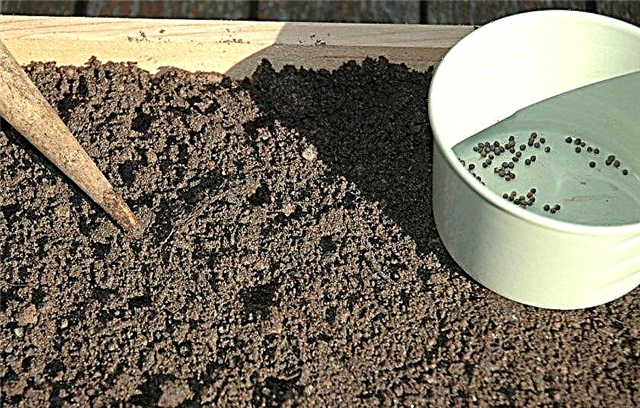
In case of early sowing, seedlings should be additionally illuminated with special phytolamps so that daylight hours are 12-15 hours.
If the seeds were sown densely, a few days after germination should be thinning, leaving for each seedling a free plot of land of about 2 cm². After the appearance of 2 real leaves, cabbage is planted in separate containers, and this process is called “picking”.
The most important rules at this point are the following:
- each sprout should be buried in the soil by cotyledon leaves;
- cabbage root should not be bent. If it does not fit in a new pot, it should be shortened by a third;
- after a dive, the soil is slightly moistened and the plants are transferred to a shaded cool place (+ 10 ... + 15 ° C).

To seedlings turned out strong and healthy, additional nutrition is needed. The following schedule is recommended:
- a mixture of 4 g of superphosphate, 2 g of potassium fertilizer and 2 g of ammonium nitrate is dissolved in 1 liter of water (per 50 plants). Top dressing is applied to pre-moistened soil 7 days after a dive;
- after 14 days, the treatment is repeated, while doubling the amount of fertilizer per liter;
- 3 days before the final transplant, a solution of 3 g of nitrate, 5 g of superphosphate and 8 g of potash fertilizers per 1 liter of water is used.
Seedling hardening
In order for cabbage to quickly take root in open ground, seedlings should be prepared for new conditions, among which the most important is the effect of low temperatures and bright sunlight.
Important! 7 days before transplantation, the frequency of watering is minimized as much as possible, if possible completely stopping hydration. This technique allows you to slightly slow down the growth of cabbage and prevent the seedlings from stretching too much.
Hardening of seedlings begins 2 weeks before planting, and on the 1st day it will be enough to open the window window for 3 hours. Gradually, the amount of time with access to fresh air is increased, taking containers first to the balcony or porch, and then to the street. In the last days before planting, seedlings should spend all daytime outdoors. In the early days, plants must be shaded under the sunlight.
 On the last evening, the cabbage is well moistened before planting.
On the last evening, the cabbage is well moistened before planting.
Planting seedlings in the ground
For a cabbage bed, choose a sunny area with fertile soil. Loams with a slightly acidic or neutral reaction, which contain a significant percentage of humus, are considered most suitable. Before planting cabbage, you can grow cucumbers and carrots, onions and peas. It is undesirable to re-plant the vegetable in the same place, as well as after related crops (radish, rutabaga, radish and daikon).
Before planting, the earth should be dug to the depth of the bayonet of the shovel and level the surface of the bed. Since Kilaton is a late variety, the distance between rows should be 70 cm, and between plants in a row - 60–70 cm.
For transplantation, you should choose a cloudy or rainy day. In case this is not possible, work is performed in the evening.
The process is performed in the following order:
- According to the planned scheme, they dig a hole for each seedling on the bayonet of a shovel and spill it with 1 liter of water.
- In each well, you can add 1 teaspoon of nitrophoska and 2 tbsp. tablespoons of ash mixed with soil.
- The plant should be removed from the pot with a lump of earth and deepened into the hole to the level of the first true leaves.
- The earth around the cabbage is well compacted, and at a distance of about 30 cm from the stem make a circular recess for irrigation.
- After watering with non-cold water, you should sprinkle a place around the cabbage with dry soil and a layer of humus, and then sprinkle with ash to prevent earthen flea.
 Seedlings need to be deepened on the first leaf
Seedlings need to be deepened on the first leaf
It is advisable to shade the bed, especially if sunny weather is expected. For this, white agrofibre is suitable, which can be pulled over the cabbage. Such protection is left until the seedlings grow.
Plant care
After transplanting to the garden bed, cabbage needs constant care and protection from pests. The main agricultural technology of the crop is described below.
Did you know? Sour cabbage soaked in rice wine was the main food for the builders of the Great Wall of China.
Fertilizer and Watering
The most important condition for a good harvest for cabbage is plentiful watering. It can be provided in several ways:
- adding water to the furrows. This option is not very suitable for watering young plants, because it often does not reach small still roots;
- traditional sprinklingwhich is quite universal, but not economical;
- drip irrigation, which will require initial costs, but it delivers moisture to each plant as evenly as possible.
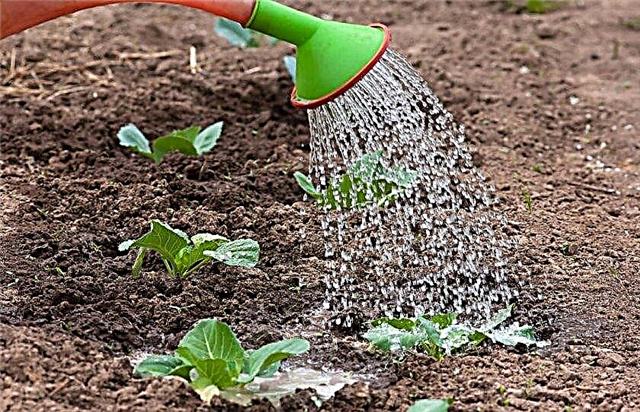 In the ripening phase of the head, watering should be reduced
In the ripening phase of the head, watering should be reduced
In the first 10-14 days after transplanting, each seedling needs watering in 3-4 days, with a consumption of 6-8 l per m². Under standard weather conditions, in the future it will be enough to moisten the plants 1-2 times a week, delivering 10-12 liters of water per m².
For cabbage, it is better to use morning or evening watering with standing water at a temperature of about + 20 ° C. On hot summer days, the plant gratefully accepts a refreshing morning or evening shower.
Top dressing of cabbage culture is carried out at the time of the greatest growth of deciduous mass and the formation of head.
You can use the following scheme:
- if no fertilizing was applied to the planting hole, after 12-14 days each seedling of cabbage can be shed with 500 ml of diluted manure (in a proportion of 1:10);
- 30 days after disembarkation, the same mixture is used again;
- the third time you need to fertilize the plants after 2 weeks, adding superphosphate (30 g per 10 l) to the same solution. For each seedling, 1-1.5 liters are needed;
- after 20 days, you can again spill the cabbage with the solution from the previous paragraph.
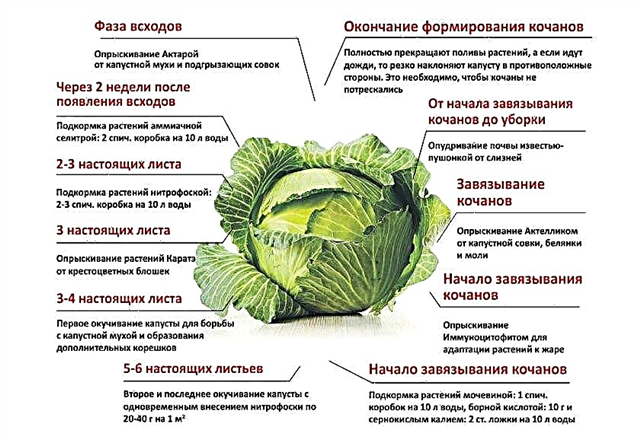
Soil loosening
The first loosening of the soil (4-5 cm deep) is performed after the young seedlings take root well. At the same time, weeds appear on the bed. A week later, the loosening is already deeper, up to 6–8 cm, and then up to 8–10 cm. This process is stopped in the closing phase of the leaves of neighboring heads of cabbage.
Thanks to hilling, the plant grows additional root mass, and perform it about 25 days after planting cabbage on the garden. Initially, plants are watered or fed, and then they rake the ground to the first leaves.

Pest and Disease Control
Cabbage is attacked by pests throughout the growing season and this can significantly reduce crop yields.
The following insects cause the most damage:
- cruciferous flea eats leaves of young cabbage and hibernates, usually under plant debris or in the soil. Insects wake up in March and develop on the foliage of cruciferous weeds, and after planting cabbage, they move to it. The peak of pest activity occurs in hot and dry weather, from 10 to 13 and from 16 to 18 hours. Prevention will be the cleaning of plant debris, loosening the soil, shading of seedlings and additional watering in the heat;

- cabbage fly crashes in early May. Her larvae eat up the roots and stalk of cabbage. Protection from flies will be autumn digging of the soil, weed control and hilling, as well as treatment of plants with infusion of burdock (2.5 kg of crushed leaves in 9 liters of warm water, strain after two days of infusion). Chemical protection can also be used - spraying with Chlorofos or Thiophos;

- small whitefly butterflies they eat cabbage both by larvae and adults. Larvae live on the inside of the leaves and, feeding the soot fungus secreted by the substance, they stain the leaf in black. Regular sprinkling and loosening, as well as the use of glue traps, will help control the whitefly population, and if necessary, Aktara, Confidor, etc. insecticides can be used;

- firebox - A nocturnal butterfly that uses cabbage to lay eggs. The caterpillars that then emerge eat the outer and inner leaves. Caterpillars winter in the soil, so autumn digging is very effective in controlling insects. Butterflies can be caught in the light, and sprinkled cabbage with “Bolofos”, “Ambush” and other drugs.

Kilaton is resistant to keel - a fungal disease that affects the culture in the seedling phase and prevents the head of cabbage from forming.
Other possible crop diseases are:
- mildew It is dangerous for young plants, whose leaves, in case of infection, become covered with yellow and gray spots, as well as plaque from the inside. In the case of the development of the disease, the leaves die off, and the cabbage ceases to develop normally, eventually dying. A significant risk factor is high humidity, and at the first signs of the disease, spraying with 1% Bordeaux liquid (0.5 l per bucket of water) is recommended. When used on seedlings, this solution should be diluted 2 times;

- bacteriosis can be mucous or vascular, the disease is transmitted by insects or plant waste. Characteristic spots appear on the leaves or stalk. Prevention is special seed treatment, autumn harvesting of beds and crop rotation;

- white rust It causes a powdery white coating on the leaves and is caused by high humidity at low temperature. For treatment, spraying with "Ridomil" is used. The fungus winters well in plant debris, so a thorough autumn cleaning of the site is required.
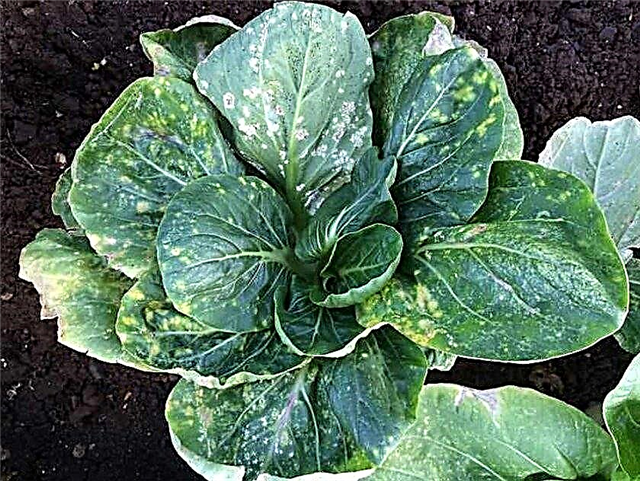
Harvesting and storage
Harvesting should be carried out in dry weather, using a sharp cutter to cut head of cabbage. For long-term storage in suspension, it is necessary to leave a long stalk, otherwise it is cut to 3 cm. The collected vegetables must be sorted. For storage leave undamaged heads of cabbage without cracks and signs of damage by frost and pests.
In the storage room it is necessary to ensure monthly ventilation, a temperature of about 0 ° C and a humidity of 85–95%. Heads of cabbage are placed in boxes in a single layer or laid out on shelves wrapped in paper. It is also possible storage in dry sand or suspended from the ceiling by the stump.
Cabbage Kilaton is a promising sustainable hybrid for winter storage. Thanks to immunity to diseases, its cultivation allows you to get a high yield.Important! A head of cabbage will be better stored if it remains covered by 2-3 upper leaves.









